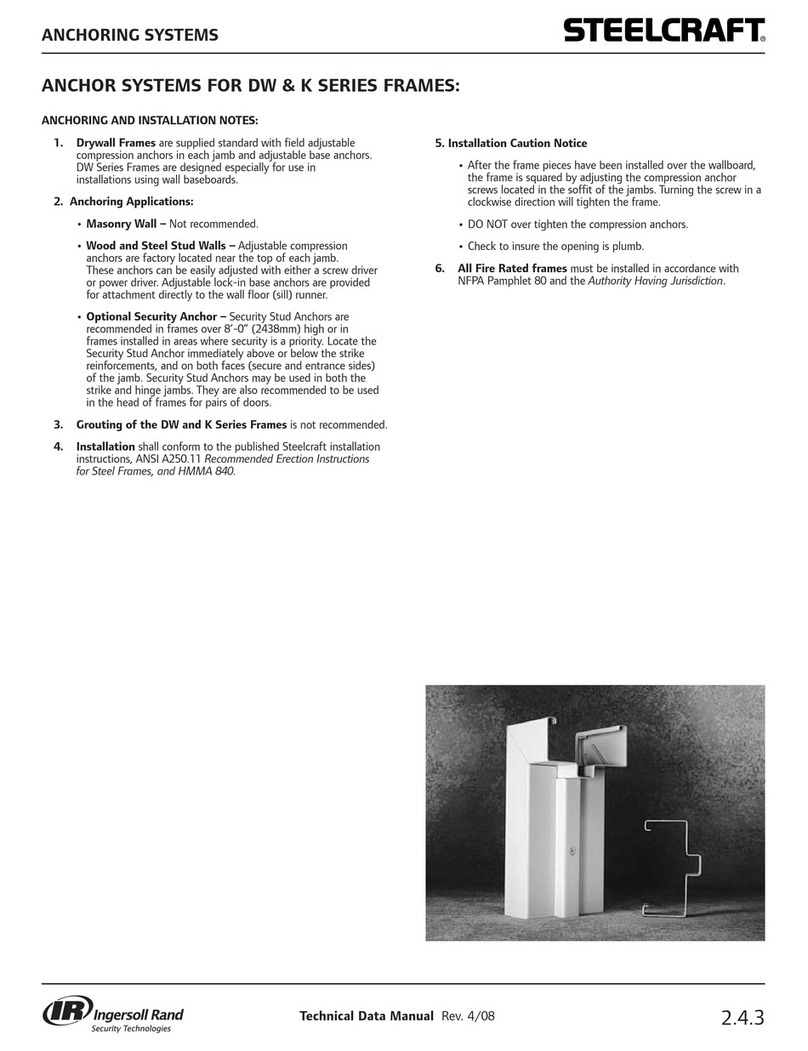
Adressez toutes vos communications au Bureau
Ingersoll–Rand ou distributeur le plus proche
Ingersoll–Rand Company 1999
Imprimé aux É.U.
MANUEL D’EXPLOITATION ET D’ENTRETIEN LA PERCEUSE
RÉVERSIBLE MULTI–VANEMODÈLE 44SMA
NOTE
La perceuse Modèle 44SMA est destinée aux grosses opérations de perçage et d’alésage dans les
constructions navales, les ateliers de chemin de fer, la mécanosoudure et les fabrications
mécaniques.
Ingersoll–Rand ne peut être tenu responsable de la modification des outils par le client pour les
adapter à des applications qui n’ont pas été approuvées par Ingersoll–Rand.
ATTENTION
D’IMPORTANTES INFORMATIONS DE SÉCURITÉ SONT JOINTES.
LIRE CE MANUEL AVANT D’UTILISER L’OUTIL.
L’EMPLOYEUR EST TENU DE COMMUNIQUER LES INFORMATIONS
DE CE MANUEL AUX EMPLOYÉS UTILISANT CET OUTIL.
LE NON RESPECT DES AVERTISSEMENTS SUIVANTS PEUT CAUSER DES BLESSURES.
MISE EN SERVICE DE L’OUTIL
•Toujours exploiter, inspecter et entretenir cet outil
conformément au Code de sécurité des outils
pneumatiques portatifs de l’American National
Standards Institute (ANSI B186.1).
•Pour la sécurité, les performances optimales et la
durabilité maximale des pièces, cet outil doit être
connecté à une alimentation d’air comprimé de 6,2 bar
(620 kPa) maximum à l’entrée, avec un flexible de
19 mm de diamètre intérieur.
•Couper toujours l’alimentation d’air comprimé et
débrancher le flexible d’alimentation avant d’installer,
déposer ou ajuster tout accessoire sur cet outil, ou
d’entreprendre une opération d’entretien quelconque
sur l’outil.
•Ne pas utiliser des flexibles ou des raccords
endommagés, effilochés ou détériorés.
•S’assurer que tous les flexibles et les raccords sont
correctement dimensionnés et bien serrés. Voir Plan
TPD905–1 pour un exemple type d’agencement des
tuyauteries.
•Utiliser toujours de l’air sec et propre à une pression
maximum de 6,2 bar. La poussière, les fumées
corrosives et/ou une humidité excessive peuvent
endommager le moteur d’un outil pneumatique.
•Ne jamais lubrifier les outils avec des liquides
inflammables ou volatiles tels que le kérosène, le gasoil
ou le carburant d’aviation.
•Ne retirer aucune étiquette. Remplacer toute étiquette
endommagée.
UTILISATION DE L’OUTIL
•Porter toujours des lunettes de protection pendant
l’utilisation et l’entretien de cet outil.
•Porter toujours une protection acoustique pendant
l’utilisation de cet outil.
•Tenir les mains, les vêtements flous et les cheveux
longs, éloignés de l’extrémité rotative de l’outil.
•Noter la position du levier d’inversion avant de mettre
l’outil en marche de manière à savoir dans quel sens il
va tourner lorsque la commande est actionnée.
•Prévoir, et ne pas oublier, que tout outil motorisé est
susceptible d’à–coups brusques lors de sa mise en
marche et pendant son utilisation.
•Garder une position équilibrée et ferme. Ne pas se
pencher trop en avant pendant l’utilisation de cet outil.
Des couples de réaction élevés peuvent se produire à,
ou en dessous de, la pression d’air recommandée.
•La rotation des accessoires de l’outil peut continuer
pendant un certain temps après le relâchement de la
gâchette.
•Les outils pneumatiques peuvent vibrer pendant
l’exploitation. Les vibrations, les mouvements répétitifs
et les positions inconfortables peuvent causer des
douleurs dans les mains et les bras. N’utiliser plus
d’outils en cas d’inconfort, de picotements ou de
douleurs. Consulter un médecin avant de
recommencer à utiliser l’outil.
•Utiliser les accessoires recommandés par
Ingersoll-Rand.
•Cet outil n’est pas conçu pour fonctionner dans des
atmosphères explosives.
•Cet outil n’est pas isolé contre les chocs électriques.
•Cet outil est conçu pour être actionné par deux
personnes.
NOTE
L’utilisation de rechanges autres que les pièces d’origine Ingersoll–Rand peut causer des risques d’insécurité, réduire les
performances de l’outil et augmenter l’entretien, et peut annuler toutes les garanties.
Les réparations ne doivent être effectuées que par des réparateurs qualifiés autorisés. Consultez votre Centre de Service
Ingersoll–Rand le plus proche.
F




























